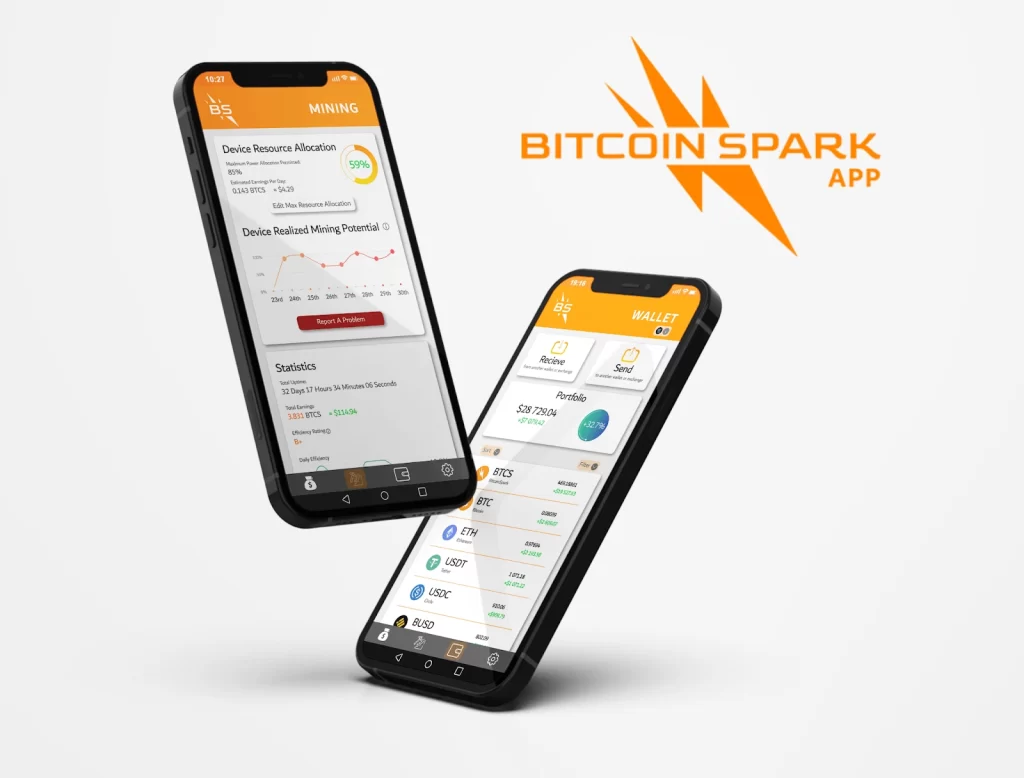The new Bitcoin alternative, Bitcoin Spark, has emerged as a fast-rising project, with rumours suggesting it will surpass various Layer-1 chains such as Solana, Monero, and Fantom this year. As a multi-faceted project, Bitcoin Spark aims to tackle the limitations faced by traditional digital currencies and avail fair products and services to all investors.
Solana Crypto
Solana’s highly scalable blockchain platform strives for fast and efficient dApps and smart contracts. It addresses the scalability issues plaguing many blockchain networks, including Ethereum, while offering a seamless user experience. Its combined “Proof-of-History” (PoH) and Proof-of-Stake (PoS) mechanisms allow high throughput and low latency. This innovation helps the cryptocurrency Solana to achieve thousands of transactions per second, making it one of the fastest blockchain platforms in the market. Its native cryptocurrency, SOL, applies for transaction fees, staking, and participating in governance decisions. SOL has gained significant attention and popularity due to the rapid growth and adoption of the Solana ecosystem. Solana has emerged as a strong competitor in the blockchain space, but its recovery from the general slump has been curtailed by SEC labelling its security. Many investors are seeing valuable prospects in Bitcoin Spark (BTCS).
Fantom Crypto
Fantom crypto came with a solution to deliver high transaction throughput, low fees, and rapid confirmation times, making it suitable for dApps and several use cases. Fantom’s strength lies in its consensus mechanism called “Lachesis,” a Directed Acyclic Graph (DAG) consensus protocol processing parallel transactions for high scalability. By using DAG, Fantom can achieve high TPS and handle several transactions. FTM, its native token, helps settle transaction fees, staking, and participating in governance decisions. FTM has seen significant growth in value and adoption as the Fantom ecosystem expands and attracts more developers and users. It supports EVM but faces competition from the new Bitcoin alternative, Bitcoin Spark.
How to mine Monero?
Monero is a cryptocurrency using proof-of-work mining for distributed consensus. The mining algorithm, called RandomX, ensures fairness by resisting specialized hardware (ASIC) and allowing consumer-grade CPUs and GPUs for mining. Miners can choose between solo mining, which increases network security but may take time to find a block, and pool mining, which offers frequent payouts based on participation but involves fees and potential centralization risks. You can mine Minero using CPUs and GPUs, and if you are into solo mining with CPUs, you can use the CLI or GUI wallets. You need a dedicated software to mine in a pool or with a GPU.
Bitcoin Spark
What if you could turn back time to when Bitcoin was only 1$? Bitcoin Spark (BTCS) offers investors a chance to onboard the Bitcoin family at $1.50 through its ICO. Phase one is open from August 1st to August 10th and offers participants 20% bonuses. In addition, the early investors’ investment will grow by 800% when BTCS launches at $10.
Bitcoin Spark is a hard fork of Bitcoin, addressing BTCS’ speed, transaction cost, and smart contract challenges. Bitcoin Spark uses an all-new blockchain technology called “Proof-Of-Process” (PoP), combining Bitcoin’s Proof-of-work and proof-of-stake. The PoP mechanism avails mining resources, distributes rewards according to advanced algorithms and computational power renting, and ensures anyone can mine. Bitcoin achieves its objectives through the Bitcoin Spark application that supports Windows, Android, iOS, Linux, and Mac OS.
Bitcoin Spark’s core tokenomics are similar to Bitcoin, but with a longer time to reach its maximum supply of 21 million. It deploys improved transactions per second by reducing block time and increasing transaction capacity. Bitcoin Spark promotes decentralization and accessibility for mining so that anyone can participate. BTCS integrates a smart contract layer for application development via multi-layered finality on the main network.
In Bitcoin Spark, users stake their tokens like in Proof-Of-Stake blockchains, but staking doesn’t directly determine earnings. Users must also provide processing power to the network, which clients use for remote computing tasks. Rewards are a blend of stake and work done, with higher rewards for more work. The system prioritizes revenue generation over stake size.
Wrap Up
Bitcoin Spark offers a competitive and promising solution in the evolving cryptocurrency landscape. As the project gains momentum, it looks primed to outperform other Layer-1 chains and potentially revolutionize the cryptocurrency industry.
Read here for more information:
Website: https://bitcoinspark.org/



